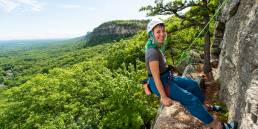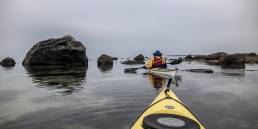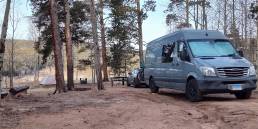Sometimes it takes a photographer’s lens to rediscover something so close to home. When director Jack LeMay set out to capture the incredible White Mountains in a documentary, he decided to take a track that we don’t often see in outdoor adventure films: He wanted to keep it quiet. His film, The Wild White Mountains, released last week, features Littleton, NH photographer Sean Terhune and his work gathering images of the mountains, their history, and their wildlife. We sat down with LeMay after the film’s release to talk with him about creating a different kind of documentary.
goEast: Of all the people in New Hampshire, what was the idea behind focusing on a photographer for this story?
LeMay: So many outdoor stories focus on the “extreme” athlete. Someone who is climbing the tallest peaks, biking the furthest distance, beating the latest record. I liked the idea of examining (and celebrating) the quieter side of adventure. Though we don’t think of a nature photographer as an “athlete,” their profession pushes them into rugged situations that require mental and physical fitness.
goEast: And what was it specifically about Shaun that got your attention?
LeMay: Shaun isn’t just any photographer. He radiates an electric spirit, invigorated by the forests he calls home. I wasn’t just drawn to Shaun’s visual art when picking a film subject. I was drawn to his philosophy. Shaun is a thoughtful and well-spoken man who has taken time to craft the life he lives and pursue the things he does. To me, he’s a unique crossroads of urban and country, liberal and libertarian, that we don’t hear from very often these days in the political conversation. There are many more fascinating topics we left on the cutting room floor for the next film.
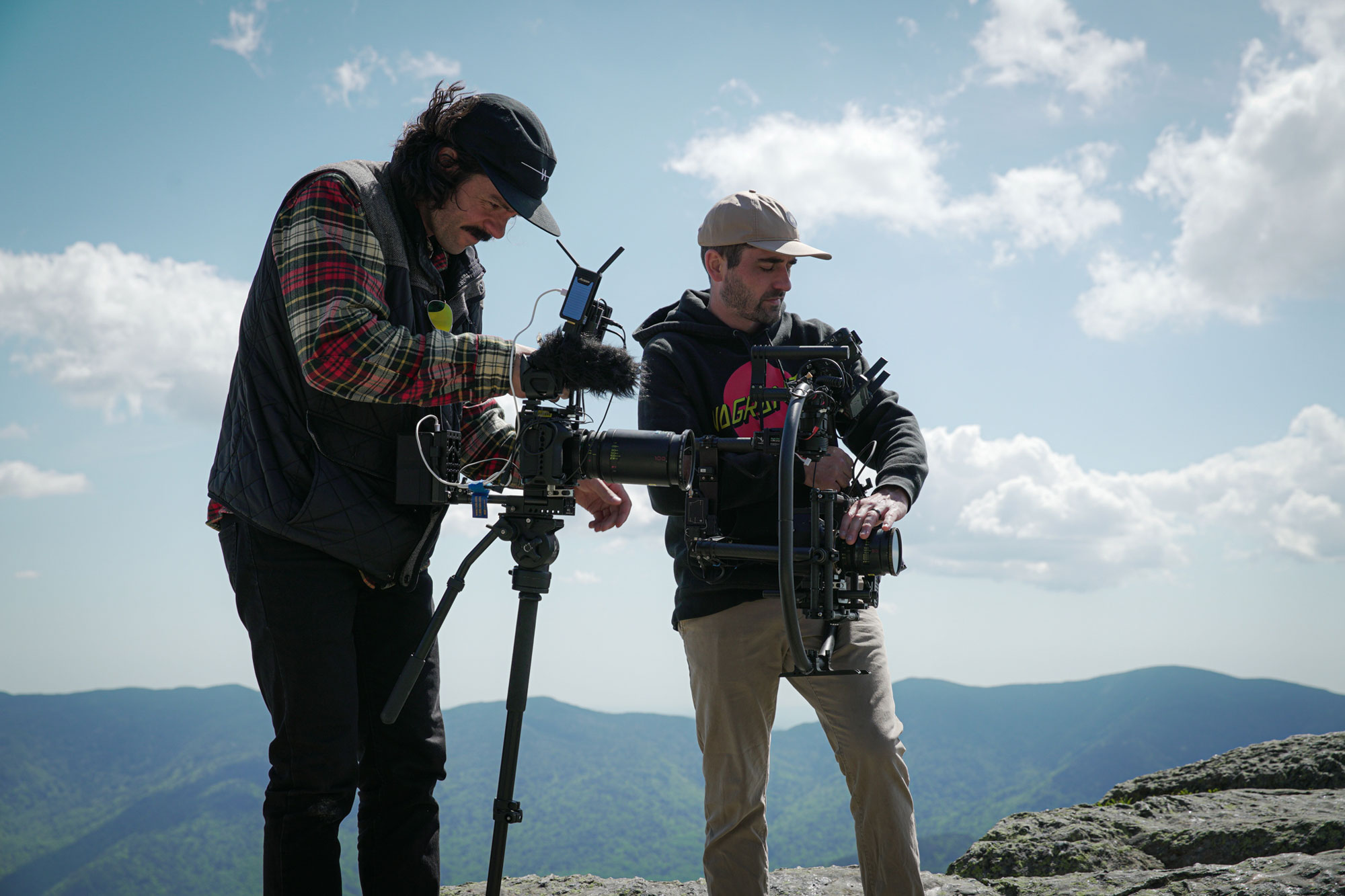
goEast: You guys do a really nice job of featuring a handful of different aspects of the Whites in this short film: The mountains, the people, the wildlife, etc. How were you able to blend them all together?
LeMay: It helps that I’m an editor as well as a director. As I discovered things I wanted to shoot in pre-production, I started to formulate connections and through threads. I thought visually about how these things could be juxtaposed in the edit. I knew having a strong visual language of centered portraiture with animated sound design would anchor the film in a style that could flow from river to town center to art store to trailhead to mountaintop, and back. I like the physical grounding of the story in Littleton and some of the surrounding mountain communities. It makes this place more personal than just some boundless “forest” somewhere.
goEast: Youtube is full of outdoor short films that focus on crazy ski lines, massive trips, professional athletes, etc. This one feels distinctly “quiet,” if that makes sense. What’s the idea behind that?
LeMay: One of my favorite aspects of being in nature is quieting down and being present with all the beauty. Don’t get me wrong, I love a good adrenaline-filled adventure too, and I’m often hungry for that. But part of the draw of nature is just taking it in. Listening to the wind in the leaves, hearing the faroff critters and groaning tree trunks, seeing the world expand in fantastical and dramatic ways from the vantage of a mountain top. I feel like this is a side of nature that can be overlooked in our high octane outdoor sport culture.
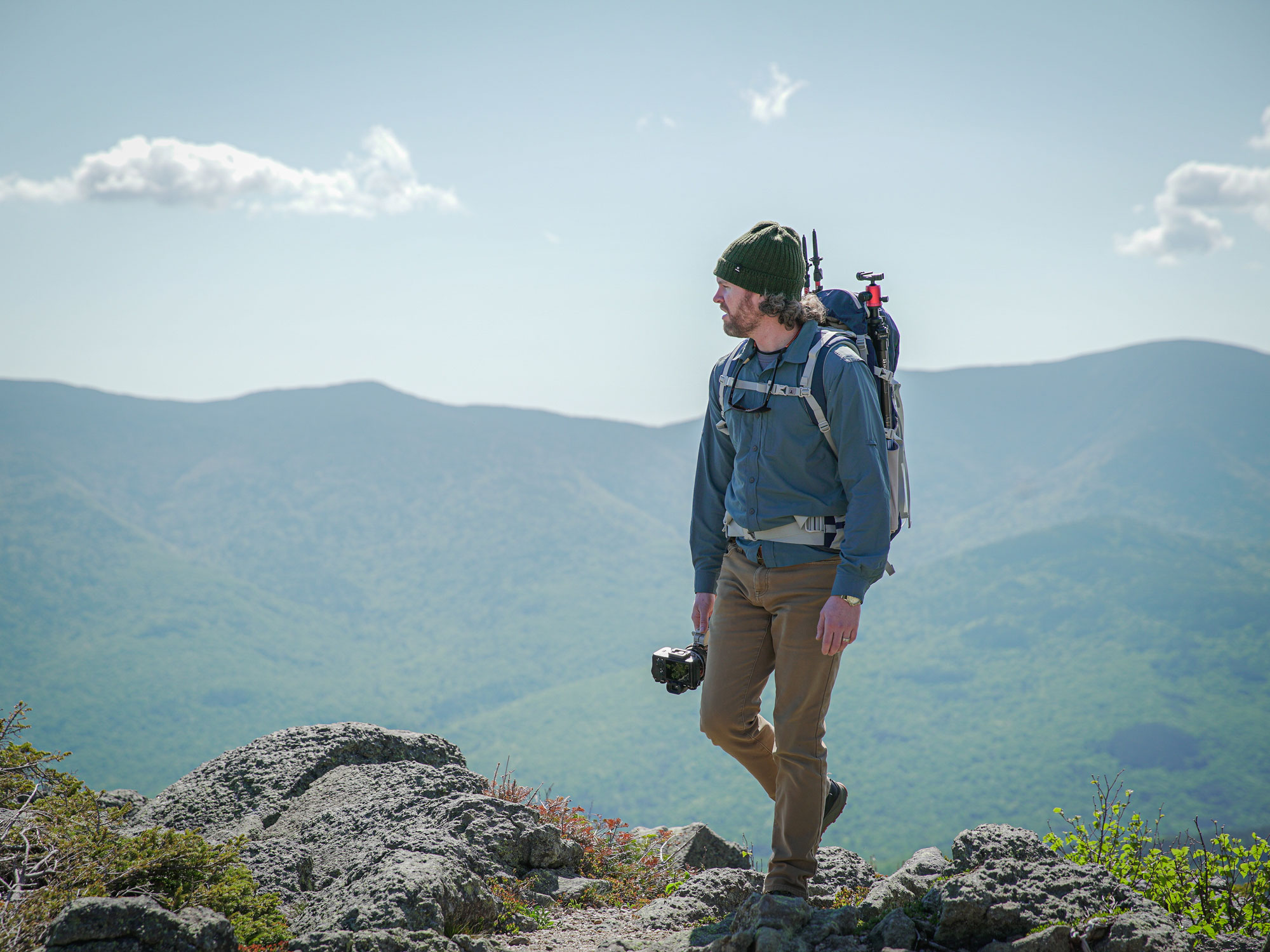
goEast: How much time did you have to spend in the woods to get those bear shots?! What did you do to get them?
LeMay: So, the bear shots took a few tries. There was definitely some careful planning and a fair amount of luck involved. First, we had to get the timing right. Shaun knew that the black bears would be most prevalent from May through early June before they switched to different sources of food and retreated deeper into the forests. He also knew that dawn and dusk is the best chance to catch them in the open. So we went for two straight days of dawns and dusks and were lucky enough to find them in two of our four outings. Once you find bears, the approach needs to be stealthy and unthreatening. But you also don’t want to sneak up and surprise them (which is dangerous). It’s a delicate dance. Having a 600mm lens helps. That means you can stay 20 or 30 yards away and still get some crystal clear imagery of the animal, without invading its personal space.
goEast: What are you hoping the takeaway is for this film for viewers?
LeMay: If people have only grazed the surface of the White Mountains, I hope it entices them to go further and look deeper. These really are special mountains and one of the greatest wilderness gems of the East Coast. I also hope it inspires some wonder and intrigue around black bears. I feel like they can be seen as either giant raccoons foraging dumpsters or wild beasts in insanely over-the-top Hollywood portrayals. They exist between those extremes. They live incredibly in tune with the Eastern woods they’ve called home for over two million years. They can be lumbering and yet silent and graceful. They can be menacing and yet docile and peaceful. More generally, I hope that viewers will advocate for the preservation and proper stewardship of the White Mountains and of all wild spaces near them. I care so much more deeply about these spaces after having walked and slept in them extensively.
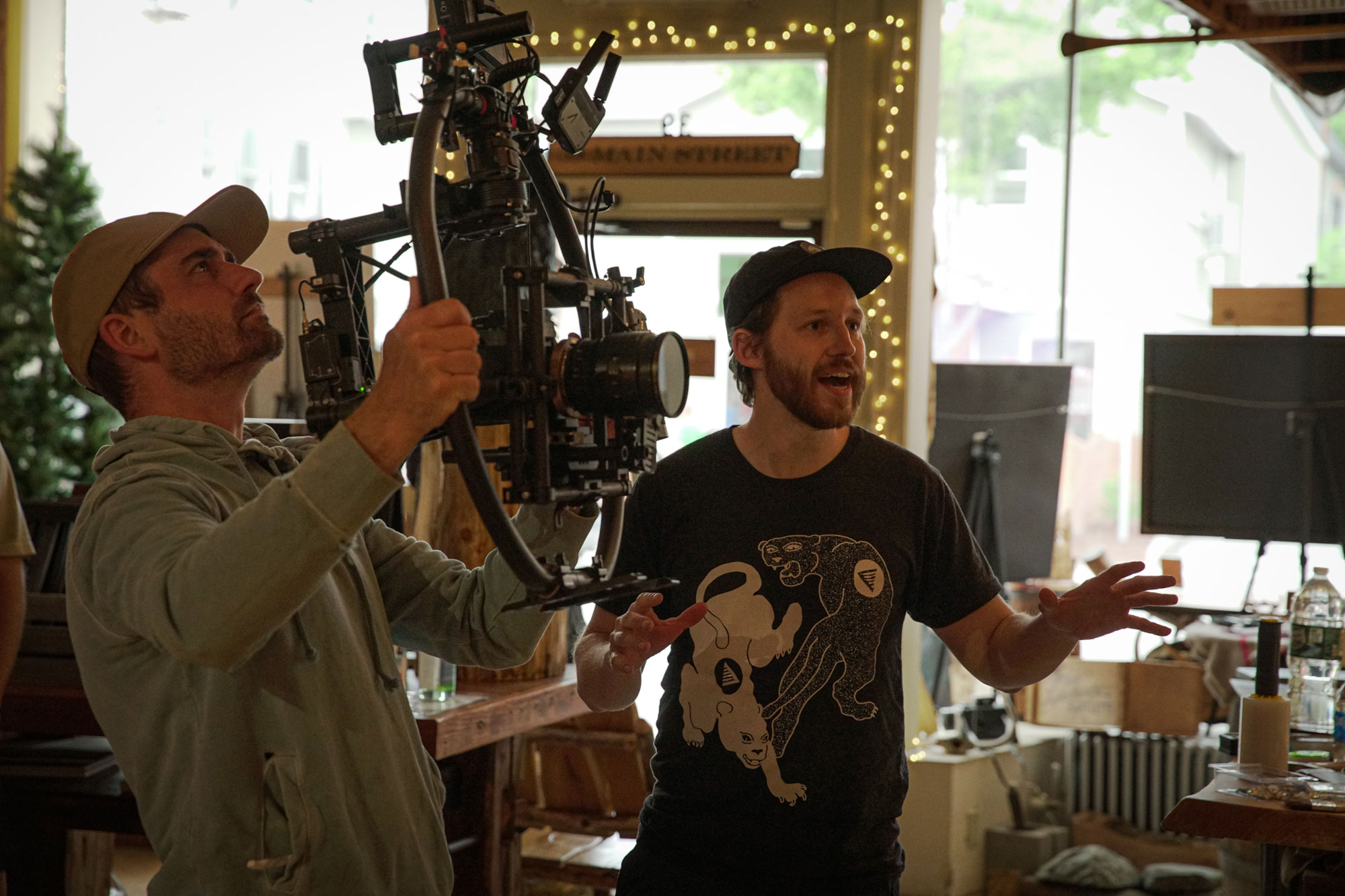
Ryan Wichelns
Ryan was goEast's only editor from its launch in 2016 until 2023. Now, he's the founding editor of Trails Magazine, the only print publication for backpackers and people who sleep in the dirt. When he's not wordsmithing, he's skiing, hiking, mountain biking, trail running, and more in Colorado's San Juan Mountains and beyond.


